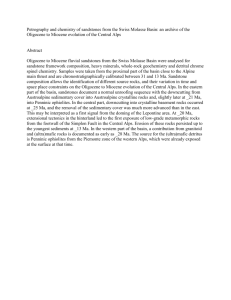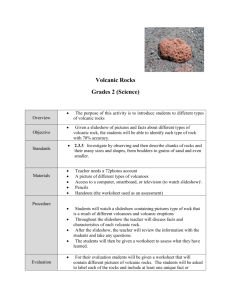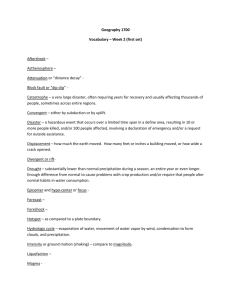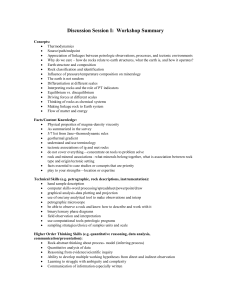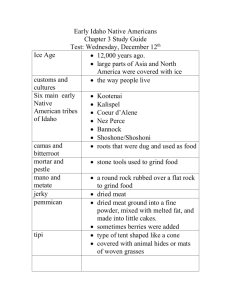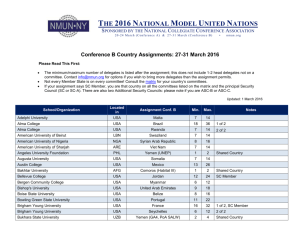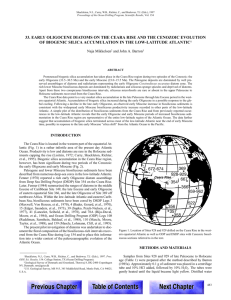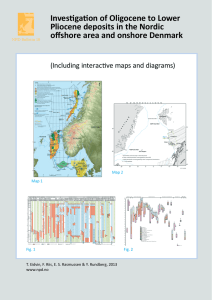Lower Miocene Olistostromal Sedimentary Sequence Structurally
advertisement
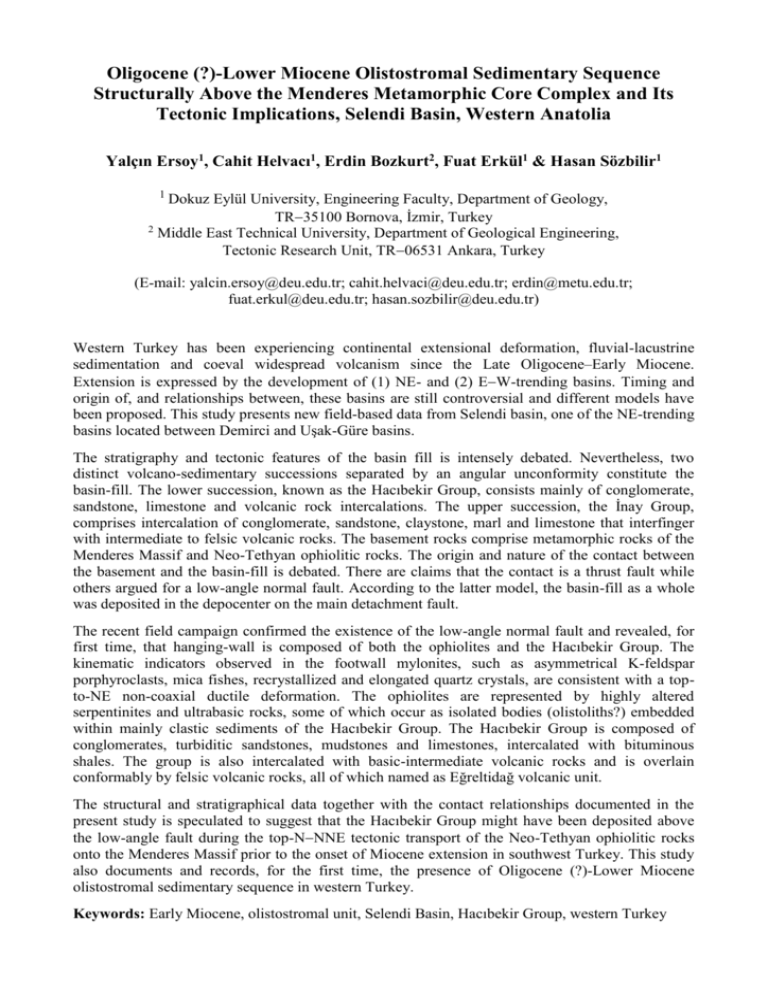
Oligocene (?)-Lower Miocene Olistostromal Sedimentary Sequence Structurally Above the Menderes Metamorphic Core Complex and Its Tectonic Implications, Selendi Basin, Western Anatolia Yalçın Ersoy1, Cahit Helvacı1, Erdin Bozkurt2, Fuat Erkül1 & Hasan Sözbilir1 1 Dokuz Eylül University, Engineering Faculty, Department of Geology, TR35100 Bornova, İzmir, Turkey 2 Middle East Technical University, Department of Geological Engineering, Tectonic Research Unit, TR06531 Ankara, Turkey (E-mail: yalcin.ersoy@deu.edu.tr; cahit.helvaci@deu.edu.tr; erdin@metu.edu.tr; fuat.erkul@deu.edu.tr; hasan.sozbilir@deu.edu.tr) Western Turkey has been experiencing continental extensional deformation, fluvial-lacustrine sedimentation and coeval widespread volcanism since the Late Oligocene–Early Miocene. Extension is expressed by the development of (1) NE- and (2) EW-trending basins. Timing and origin of, and relationships between, these basins are still controversial and different models have been proposed. This study presents new field-based data from Selendi basin, one of the NE-trending basins located between Demirci and Uşak-Güre basins. The stratigraphy and tectonic features of the basin fill is intensely debated. Nevertheless, two distinct volcano-sedimentary successions separated by an angular unconformity constitute the basin-fill. The lower succession, known as the Hacıbekir Group, consists mainly of conglomerate, sandstone, limestone and volcanic rock intercalations. The upper succession, the İnay Group, comprises intercalation of conglomerate, sandstone, claystone, marl and limestone that interfinger with intermediate to felsic volcanic rocks. The basement rocks comprise metamorphic rocks of the Menderes Massif and Neo-Tethyan ophiolitic rocks. The origin and nature of the contact between the basement and the basin-fill is debated. There are claims that the contact is a thrust fault while others argued for a low-angle normal fault. According to the latter model, the basin-fill as a whole was deposited in the depocenter on the main detachment fault. The recent field campaign confirmed the existence of the low-angle normal fault and revealed, for first time, that hanging-wall is composed of both the ophiolites and the Hacıbekir Group. The kinematic indicators observed in the footwall mylonites, such as asymmetrical K-feldspar porphyroclasts, mica fishes, recrystallized and elongated quartz crystals, are consistent with a topto-NE non-coaxial ductile deformation. The ophiolites are represented by highly altered serpentinites and ultrabasic rocks, some of which occur as isolated bodies (olistoliths?) embedded within mainly clastic sediments of the Hacıbekir Group. The Hacıbekir Group is composed of conglomerates, turbiditic sandstones, mudstones and limestones, intercalated with bituminous shales. The group is also intercalated with basic-intermediate volcanic rocks and is overlain conformably by felsic volcanic rocks, all of which named as Eğreltidağ volcanic unit. The structural and stratigraphical data together with the contact relationships documented in the present study is speculated to suggest that the Hacıbekir Group might have been deposited above the low-angle fault during the top-NNNE tectonic transport of the Neo-Tethyan ophiolitic rocks onto the Menderes Massif prior to the onset of Miocene extension in southwest Turkey. This study also documents and records, for the first time, the presence of Oligocene (?)-Lower Miocene olistostromal sedimentary sequence in western Turkey. Keywords: Early Miocene, olistostromal unit, Selendi Basin, Hacıbekir Group, western Turkey
